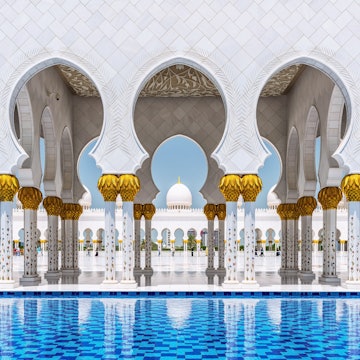

Boat in Malmö waterway. Allard Schager / Getty Images
Multicultural Malmö, capital of Skåne county and Sweden's third largest city, is almost (but not quite) surrounded by water, occupying a prime position approximately 40km east of Copenhagen across the Öresund Strait, and a short hop across the Baltic Sea from present-day Germany. The sea is never far from the hearts and minds of the locals, a vibrant ethnic mix made up of more than 150 nationalities, many of whom arrived here by ship and owe their livelihoods, in one way or another, to the ocean.
Malmö’s maritime history
First chartered in the late 13th century by Hanseatic merchants attracted to its herring trade, Malmö had long garnered the interests of both the Danes and the Swedes, and each nation governed this seaside city during various periods of its, at times, turbulent history.
It was in the 14th century that Malmö's grand merchants’ houses were built, followed by its churches, including the hulking Gothic Sankt Petri kyrka, and castle, Malmöhus slott. The castle's present day museums are a great first stop to learn about the city's political past and where it fits in terms of the locals' love affair with the sea. Housed within the fortress walls, museum displays explore Malmö's history from medieval times to the present day. It was after the city capitulated to the Swedes in 1658 that Malmö found its groove as an important commercial centre and the castle was bolstered to protect trade. Admission to the museum also gains you entry into the nearby Teknikens och sjöfartens hus technology and maritime museum, which gives insight into Malmö's growth from the standpoint of the city as first and foremost, an important port: a centre for trade and migration throughout the ages.
When you're done, take a stroll through the city's beautiful canal-side park, Kungsparken, on the castle's doorstep, and wander onwards through Gamla Staden, Malmö's Old Town, to its town square, Stortorget where many of the finest 16th-century buildings still stand.

Activities on the water
By now, you'll have realised (and might've been surprised to learn), that Malmö, like Venice, or Amsterdam, but to a lesser extent, has an intricate network of waterways and canals, running through and beneath the city. Historically a more crucial part of the city's infrastructure than they are today, the best way to get a sense of the scope and historical importance of Malmö's canals, is to get on the water. Opposite Central Station, Rundan, operates a regular schedule of fifty-minute boat tours from April to September. Otherwise, if you fancy yourself a bit of a master mariner and have a confident navigator on-side, you might want to consider the DIY option, renting your own boat from City Boats Malmö or BookaBoat.
Continuing along this nautical theme, it's worthwhile taking a stroll to the beach at Ribersborgstranden. If you're visiting in the height of summer, consider yourself a water-baby, or are as tough as the locals, you can't get a better understanding of Malmö's love of the sea than by plunging yourself, literally, into it. One of Malmö's most unique and different attractions is Ribersborgs kallbadhus, located at the end of a 200m pier jutting out from the beach, into the sea. Here, you'll bathe nude, as nature intended it, with separate sections for men and women. Hardy locals have been known to throw themselves into the icy depths, post sauna, year-round!
To complete your explorations of maritime Malmö, you'll need to explore the revitalised Västra Hamnen port area, located between the beach and Central Station. On a sunny day, Västra Hamnen attracts locals from all corners of the city and all walks of life, who come to stroll, bike or rollerblade along the waterfront promenade, admiring the views of the Öresund Bridge in the distance. ‘The Bridge’ as it's called, is the longest cable-tied road and rail bridge in Europe, spanning 7.8km across the eponymous Straits, which once separated the Swedes from the Danes, but now brings them closer together. Here, you can also gawk at another marvel of modern engineering that is Scandinavia's tallest building, the Turning Torso, twisting skywards to a height of 190m. But most locals just come to be by the water. You'll find them here, sipping coffee, people watching, wining and dining in the many buzzing bars and eateries that have sprung up in this forward-looking, up-and-coming part of town. Why not join them?

Getting your seafood fix
Getting intimate with Malmö's seafaring roots takes energy and you'll be likely to work up an appetite that can only be satisfied by seafood, in which case, there are a few standout offerings. For lunch, Saltimporten Canteen offers top-notch, great value, Swedish fare in a unique heritage location, with water views to top it all off. Another option is Malmö Saluhall, an indoor market with an eclectic food court that’s a short walk from Old Town. For dinner, you'll find local seafood features heavily on most menus about town (and Malmö has many fantastic restaurants worthy of your patronage) but as a time-tested all rounder back in the heart of the Old Town, Johan P is sure to please, for its extensive menu, daily specials and professional service.
















